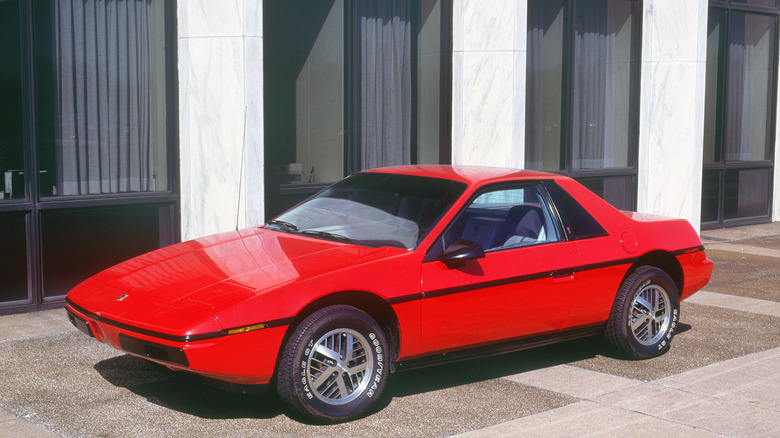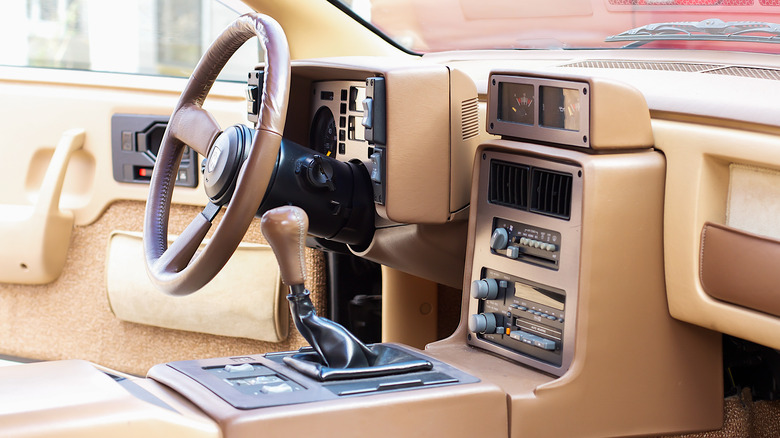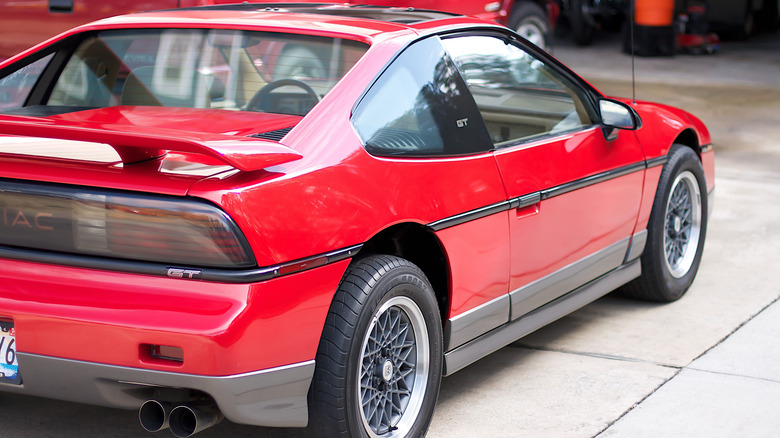The Real Reason The Pontiac Fiero Was Discontinued
To understand the death of something, one must first know the conditions into which it was born. In this case, the Pontiac Fiero, GM's first mid-engine sports car, was a long-developing idea borne of necessity during a time of crisis, coupled with bargain bin parts and a litany of bad decisions.
As the 1970s gave way to the 80s, Pontiac was desperate for a vehicular hit that would put it back on the map while differentiating it from the handful of other automakers within General Motors' stable. Pontiac's General Manager at the time, Bill Hoglund, felt that an affordable two-seat sports car would help recapture the performance image the company once had with the legendary — and by-then faded — GTO. Hoglund wanted to aim this sporty two-seater at the road warriors who commuted to work and market it as a gas-sipping, environmentally-friendly car, capable of running errands around town economically.
With the OPEC gas crisis still fresh in the minds of consumers, General Motors begrudgingly green-lit the project but only gave Pontiac a mere $700 million to get it done (via Motor Trend).
Interestingly, the Fiero actually started life way back in the 60s. Elliott Estes, Pontiac's former Chief Engineer (1956-1961) and General Manager (1961–1965), pitched it as an affordable "toy" — a sporty alternative to Chevy's higher-end Corvette. However, GM failed to approve the unique idea at the time (via Hagerty).
Origins of the fierce sporty two-seater
In 1978, the concept was brought off the ice by Denny O'Donnell, Pontiac's then-strategic planning manager, while at a quarterly Future Product Conference (FPC). The FPC was, ironically, helmed by none other than Elliott Estes, who had since become President of General Motors (via Hagerty). Estes ordered a concept car, but it took another half dozen years of revisions, design modifications, and various Pontiac General Managers before the little two-seater would make it to production.
In 1984, the plastic-bodied Pontiac Fiero, which means "very proud" in Italian and "fierce" in Spanish, was released for $7,999. By the end of the year, nearly 137,000 were on the road (via Motor Trend). It became such a hot commodity that it zipped around as the pace car for the Indianapolis 500 that same year, and the 2M4 model even made it on "Car & Driver's" 10-best list.
Then, Pontiac's penny-pinching ways, combined with the bargain bin parts used to get the sporty commuter car into production on such a paltry sum... came back to burn them, literally.
While it may have handled well and gone from 0-60 in 11.3 seconds with a top speed of 105 mph, it was full of so many parts and pieces cobbled together from other GM vehicles, something was bound to go wrong.
The Fiero was a little bit of this and a little bit of that
The front suspension, steering, and brakes had been yanked from the existing Chevette. GM never bothered with a power steering system because it saved them even more money. The driveline and rear suspension were actually the front wheel drive components ripped out of Citation ... and "flipped around backward" (via Motor Trend).
The "Iron Duke" was a heavy 92-hp OHV 2.5-liter four-cylinder unsuitable for a high-revving sports car. The engine was slightly too large for the engine compartment, so the engineers reduced the size of the oil pan.
According to one authorized GM parts dealer, this caused the engine to run low on oil, which made it easy to overheat the engine, leading to fires. Yet, as reported by Hagerty, the oil issue was due to an "incorrectly marked dipstick" and the owner's manual listing the oil pan as three-quart instead of four-quart.
Whatever the case, Fiero sales began to slide due to bad publicity, and the following year production dropped to just over 76,000 a year later. Sales increased slightly in 1986, but once consumer advocate Ralph Nader got involved and claimed that engine problems were leading to fires, sales continued to plummet until GM halted production in 1988.


